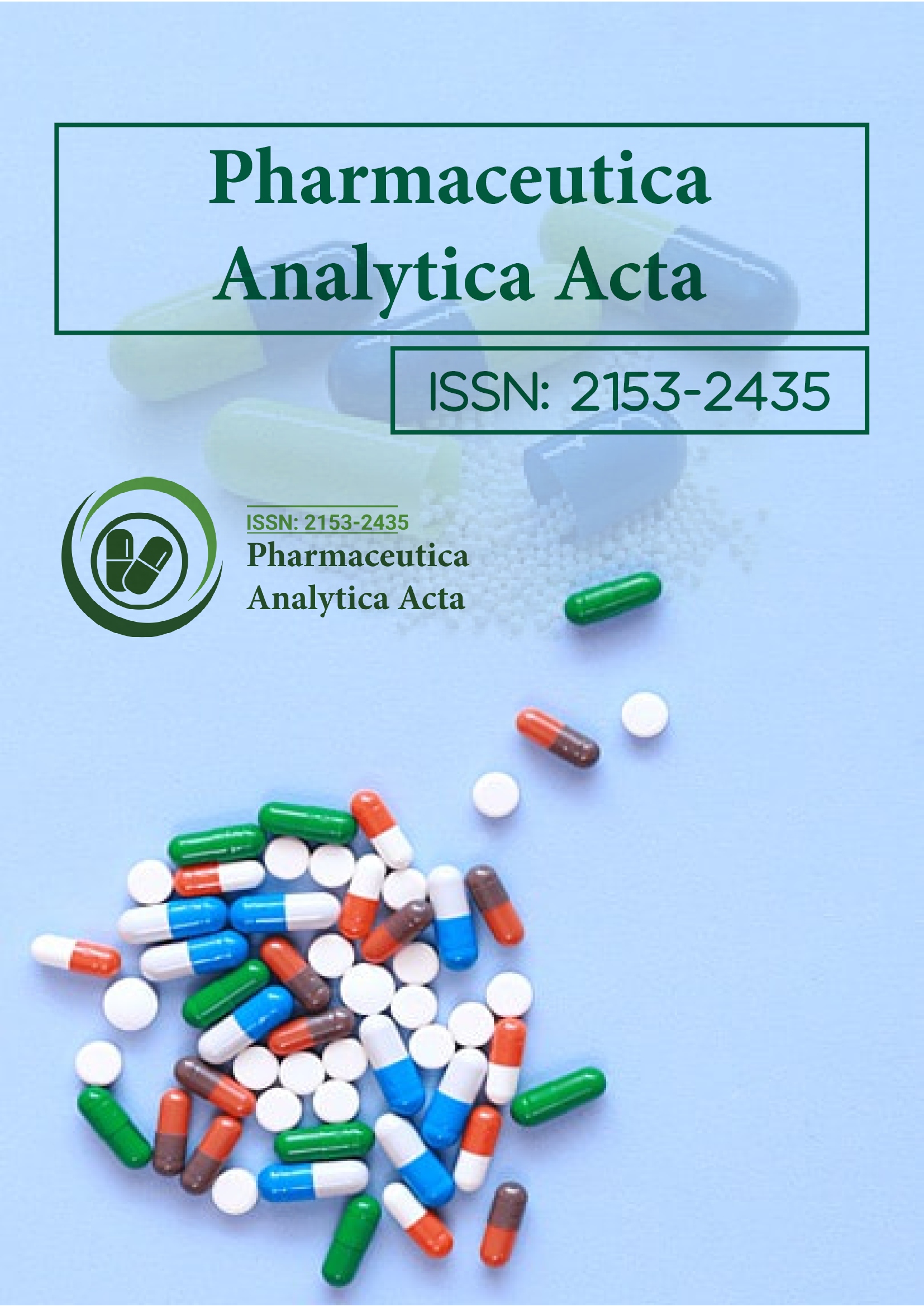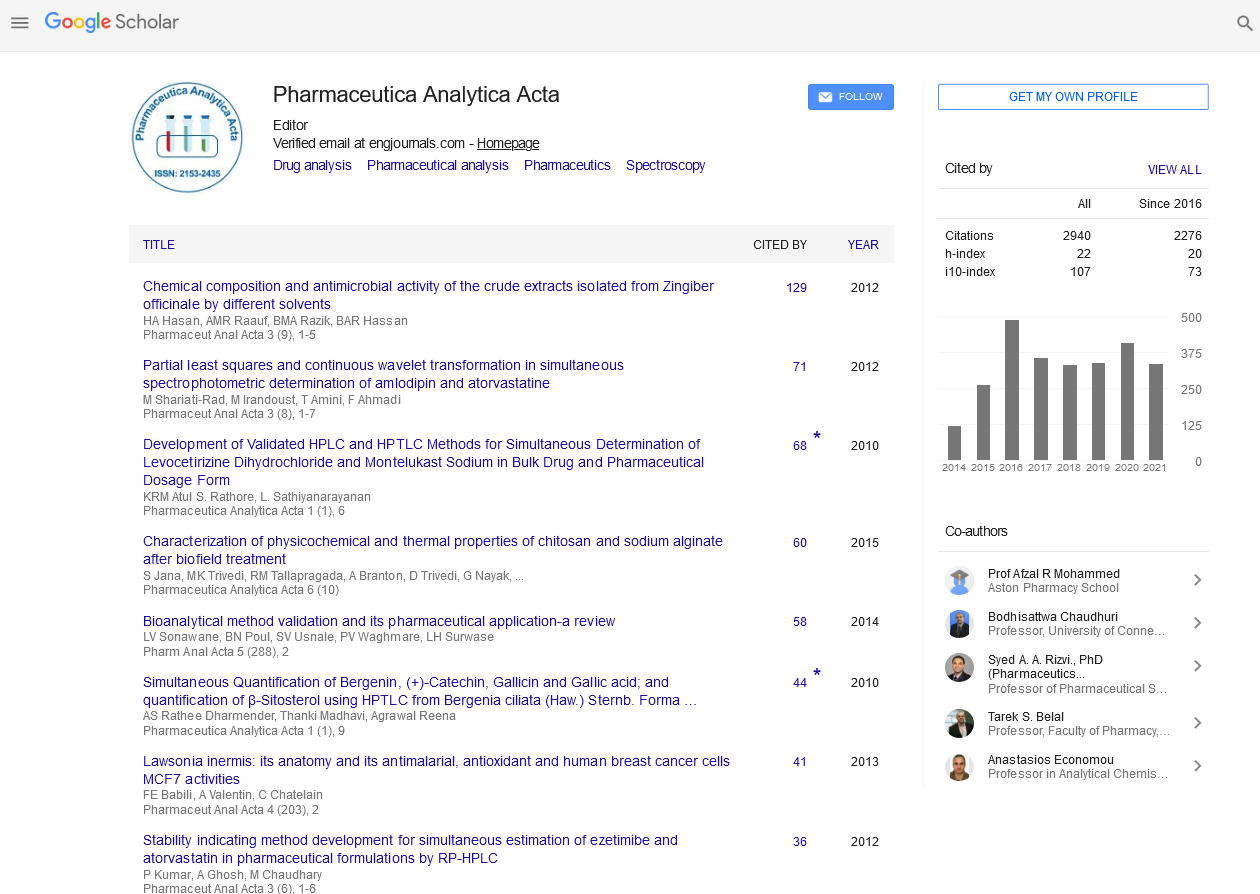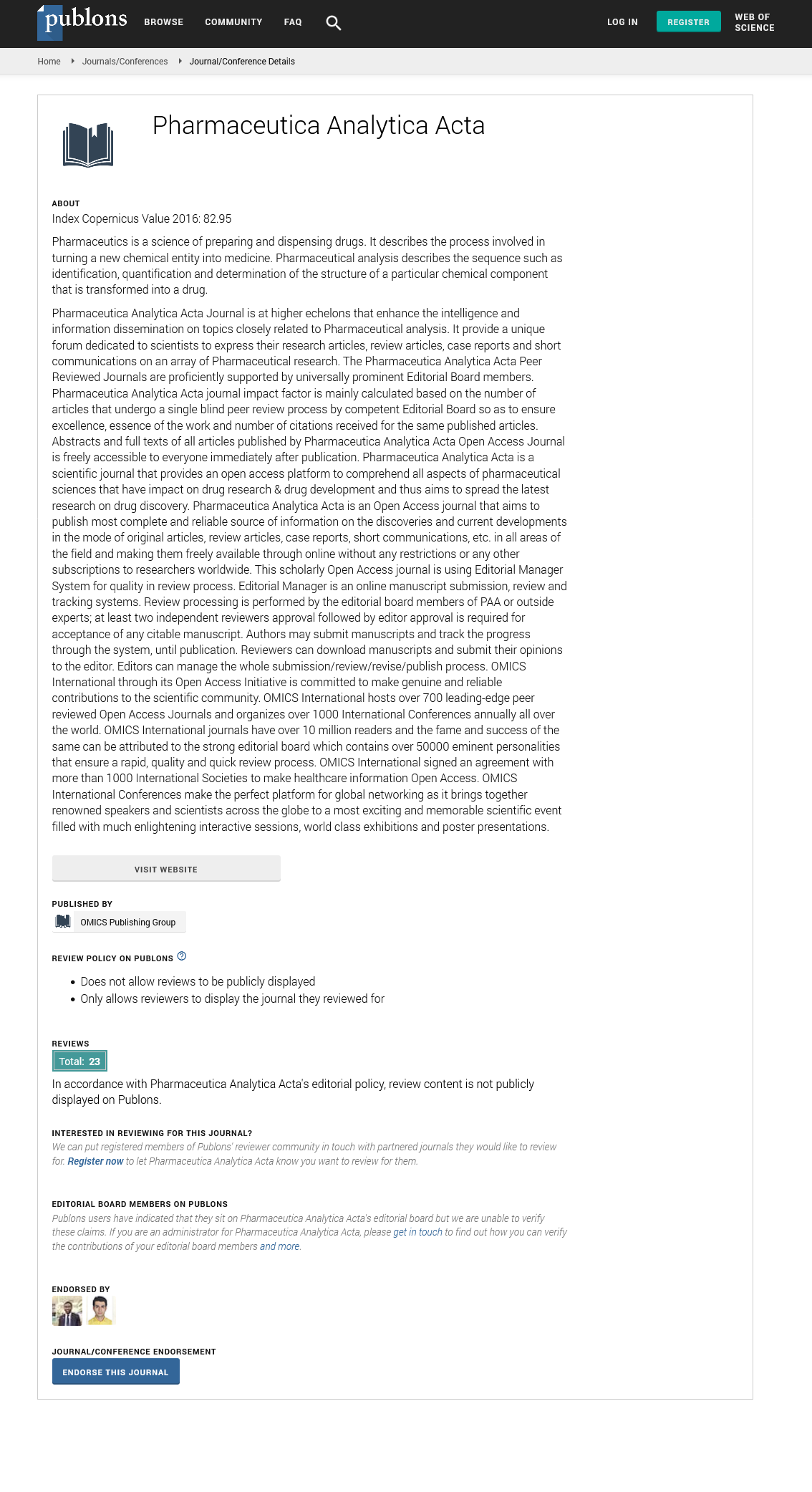Indexed In
- Open J Gate
- Genamics JournalSeek
- Academic Keys
- JournalTOCs
- The Global Impact Factor (GIF)
- China National Knowledge Infrastructure (CNKI)
- Ulrich's Periodicals Directory
- RefSeek
- Hamdard University
- EBSCO A-Z
- OCLC- WorldCat
- Publons
- Geneva Foundation for Medical Education and Research
- Euro Pub
- Google Scholar
Useful Links
Share This Page
Journal Flyer

Open Access Journals
- Agri and Aquaculture
- Biochemistry
- Bioinformatics & Systems Biology
- Business & Management
- Chemistry
- Clinical Sciences
- Engineering
- Food & Nutrition
- General Science
- Genetics & Molecular Biology
- Immunology & Microbiology
- Medical Sciences
- Neuroscience & Psychology
- Nursing & Health Care
- Pharmaceutical Sciences
Commentary Article - (2025) Volume 16, Issue 2
Analytical Developments and Global Relevance of Pharmaceutica Analytica Acta
Sarah Thompson*Received: 31-May-2025, Manuscript No. PAA-25-30214; Editor assigned: 02-Jun-2025, Pre QC No. PAA-25-30214; Reviewed: 16-Jun-2025, QC No. PAA-25-30214; Revised: 21-Jun-2025, Manuscript No. PAA-25-30214; Published: 30-Jun-2025, DOI: 10.35248/2153-2435.25.16.812
Description
A platform for scientists and professionals to present innovative techniques for examining pharmaceutical substances and formulations with precision and reliability. The main emphasis lies on method development, refinement of existing tools and the introduction of new strategies that improve accuracy and efficiency in laboratory and industrial settings. A significant focus of the journal is the continuous progress in chromatographic and spectrometric techniques used to identify trace-level impurities in active pharmaceutical ingredients. These unwanted substances, even when present in very small amounts, can influence the safety, stability and overall therapeutic performance of a medication. Authors contributing to the journal often describe analytical procedures that improve separation, reduce interference and enhance detection sensitivity. Such methods are essential for ensuring that pharmaceutical products meet stringent international safety and quality standards. By presenting advanced procedures for impurity assessment, the publication helps safeguard public health and supports pharmaceutical manufacturers in maintaining consistent product quality.
In addition to impurity analysis, much attention is given to quantitative studies of metabolites and degradation products in complex biological systems. The measurement of lowconcentration compounds in biological fluids such as plasma or serum demands exceptional precision and validation. Articles frequently outline workflows that include sample preparation, extraction and advanced detection steps designed to achieve dependable quantification. Many of these studies integrate chromatographic separations with spectroscopic techniques, including mass spectrometry, which allows highly specific and sensitive identification of metabolites. These investigations expand understanding of pharmacokinetics and drug metabolism, offering valuable information for both clinical and manufacturing applications. Method development and validation form another essential part of the journal’s content. Validation parameters such as linearity, precision, recovery, stability and detection limits are often discussed in depth. This focus helps ensure that analytical data remain reproducible and reliable across different laboratories. Papers frequently describe how small variations in temperature, solvent composition, or equipment can influence results, providing readers with practical insights into maintaining accuracy. The inclusion of studies on automation and data management further reflects the direction modern analytical laboratories are taking. Software-based tools for data collection and statistical analysis are becoming standard components of pharmaceutical analytics, improving speed and reproducibility while minimizing human error.
The publication also welcomes case studies that demonstrate how laboratory findings are applied to manufacturing and quality control. These practical examples show how analytical methods are implemented for in-process testing, shelf-life monitoring and compliance with good manufacturing practices. By combining scientific research with industrial application, the journal offers a comprehensive picture of how analytical innovations influence day-to-day pharmaceutical operations. Recent articles have shown increasing interest in compact analytical instruments. Miniaturized chromatographs and spectrometers allow rapid, on-site testing and immediate decision-making during production or quality assurance. Studies comparing these portable instruments with conventional systems highlight the potential for faster results, improved sensitivity and lower sample requirements. Such developments make it possible for small-scale laboratories and manufacturing sites to perform high-quality analyses without extensive infrastructure.
Another defining aspect of Pharmaceutica Analytica Acta is its open-access model. Readers across the world, regardless of institutional affiliation or funding level, can access the latest research without cost barriers. This accessibility has a major impact on regions with limited scientific resources, where researchers and practitioners can benefit from recent findings and validated techniques. It promotes a broader exchange of knowledge and contributes to harmonizing analytical standards across diverse pharmaceutical markets. The journal also ensures scientific credibility through a rigorous peer-review process. Each submission is evaluated by experts to confirm methodological soundness, clear data presentation and relevance to pharmaceutical analysis. This process maintains the quality and reliability of the published research and builds trust within the global scientific community. The diversity of contributors ranging from academic researchers and industrial scientists to regulatory specialists adds to the journal’s relevance and depth, presenting readers with a variety of perspectives and approaches to analytical problems.
In an era where scientific technologies evolve rapidly, Pharmaceutica Analytica Acta serves as an essential source of upto- date information for those engaged in pharmaceutical research, development and production. It informs its audience about emerging analytical trends, method validation practices and compliance requirements from international agencies. Each publication contributes to improving technical knowledge and guiding the implementation of reliable analytical systems. For students and young researchers, the journal acts as an educational tool to understand modern approaches to pharmaceutical measurement. For professionals in manufacturing, it provides a trusted reference for implementing validated and regulatory-acceptable methods. Its open-access policy magnifies this value by ensuring that anyone, anywhere, can benefit from these shared insights and technical advancements. In conclusion, this continues to contribute to the advancement of pharmaceutical analysis through the publication of research that connects theory with application.
Citation: Thompson S (2025). Analytical Developments and Global Relevance of Pharmaceutica Analytica Acta. Pharm Anal Acta. 16:812.
Copyright: © 2025 Thompson S. This is an open-access article distributed under the terms of the Creative Commons Attribution License, which permits unrestricted use, distribution and reproduction in any medium, provided the original author and source are credited


